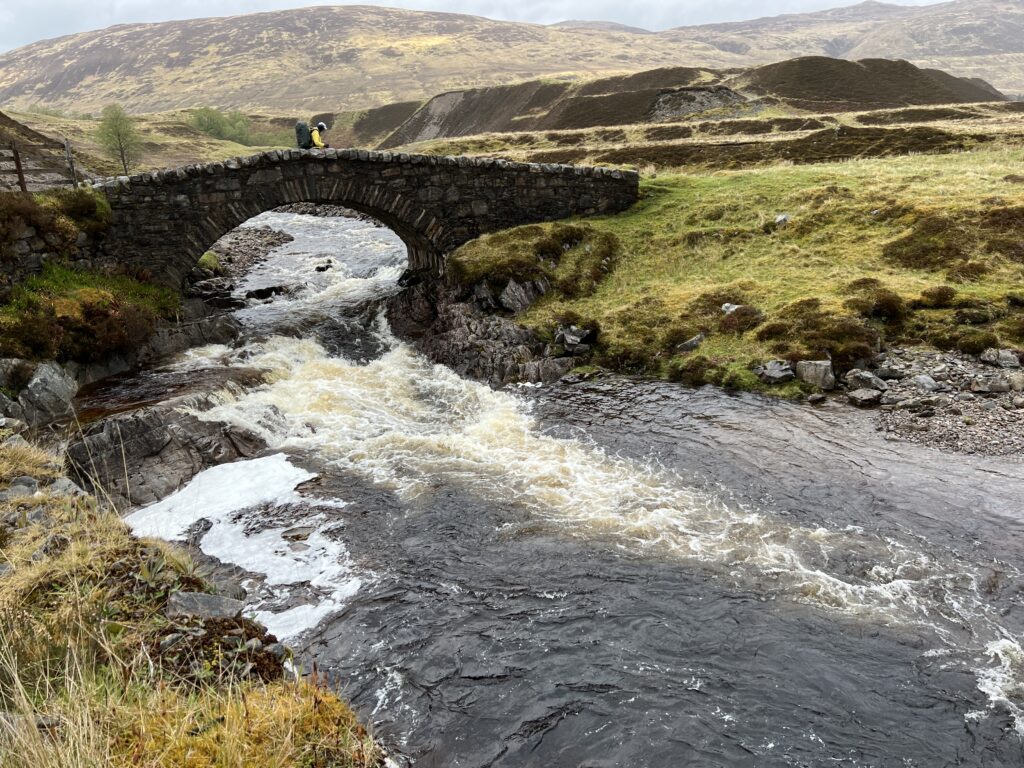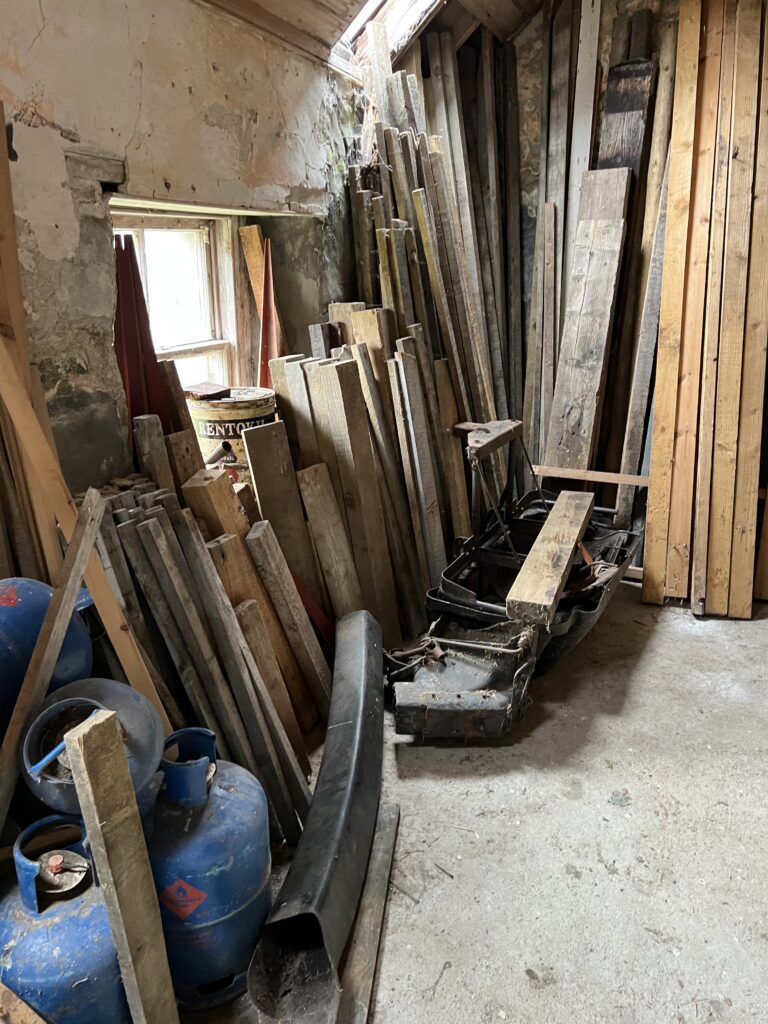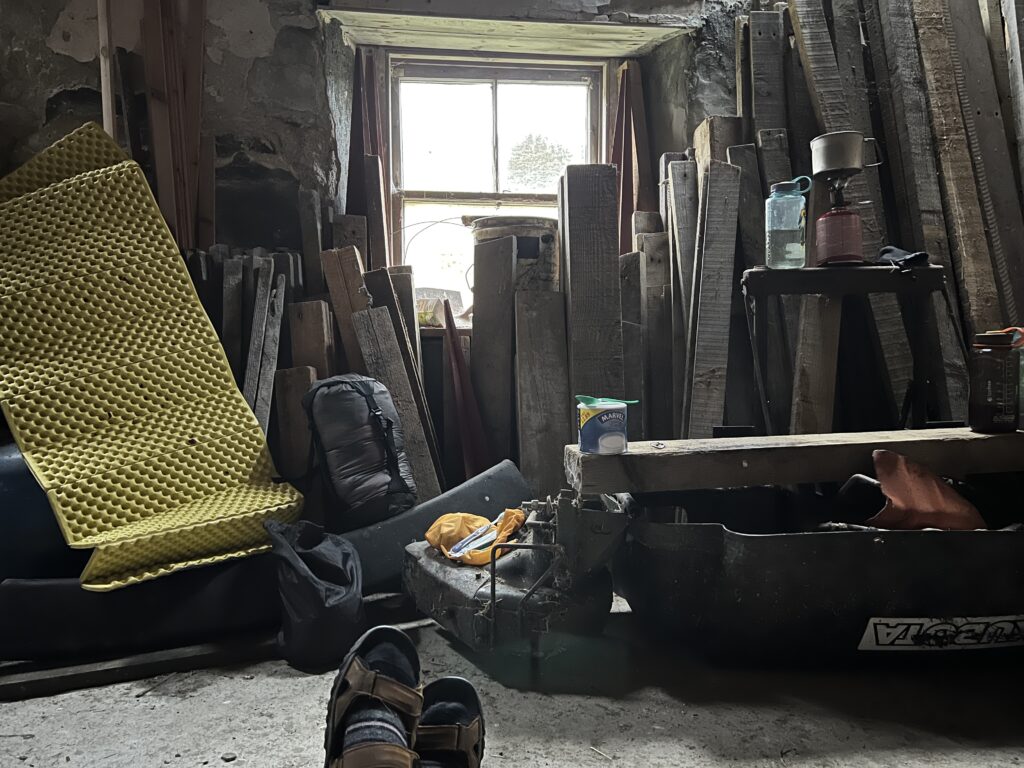Scottish hillwalking’s most venerable tradition is the “right of public access.” It allows citizens to cross private lands and camp on them, with some restrictions. A similarly public-spirited tradition is the maintenance of repurposed farm buildings or tenant cottages, called “bothies,” as shelter for cold and wet hillwalkers.
Today, Mark Beckwith and I brought the traditions together.
We’d been walking for 12 miles in on-and-off rain and rising afternoon winds. Our goal was a bothy the vetter of my route had mentioned in his comments after I’d submitted it for approval. I’d proposed camping near an ancient stone bridge on the estate that owns (or at least controls) a big part of Glen Roy, one of the many river valleys, or glens, of the Central Highlands.
“I’d suggest going a little further along the glen beyond Turret Bridge, which is perhaps a little close to the lodge,” wrote Colin Crawford. “If you can stretch as far as the bothy, you’ll find it to be a comfortable overnight halt, with an impressive staircase and a large open plan upstairs area. At one time you could always assume that it would be well-stocked with wood, thanks to a retired Mountain Guide who lived down the glen. That may still be the case, but the gentleman in question must now be getting on in years, if indeed he’s still there.”
We’d passed Brae Roy Lodge, an imposing stuccoed stone house that I’d say was mostly built in the first half of the 1800s. It’s undoubtedly where the owner of the estate once lived (or stayed in if he was an absentee), but there were no cars outside and no evidence of life at the moment.
We walked on. Less than 10 minutes away, out of view of the lodge, was the stone bridge in question—a simple, handsome, and indestructible piece of engineering of the kind one encounters occasionally in the Highlands. Such places always set my mind to wondering.
You could create a whole history course around this bridge, making it a keyhole through which to view economy, culture, social structure, governance. When was it built? Who built it, and why? What’s the “turret” all about? Who was the designer and what determined its dimensions? What effect did it have on life hereabout? When did it cease being important, and why does almost nobody go over it today?
But I digress.
As we wanted to avoid another night in our pathetic trekking-pole tents, and as it was getting cold and threatening rain, we pushed on to the bothy Vetter Crawford had mentioned. In less than 10 minutes, we saw a stone building on our left, with a path mowed to it.
It certainly looked like a bothy.
I should have known that when a hillwalker says: “If you can stretch as far as the bothy . . .” he isn’t talking about an eight-minute walk. In fact, the building that Mr. Crawford said we might want to push on to was more than three miles up the trail. (More about it in the next post.)
We walked up to it. There was no sign of recent activity. It was unlocked. We opened the door and walked in.
Leaning against the walls and piled along them were lots of rough lumber, posts, pallets, propane tanks, attachments for farm implements, ancient containers of agricultural chemicals, and a sheet-metal cabinet. The fireplace at one end was entirely hiddlen by stored stuff.
There was plenty of room for two sleeping pads and bags. The items in storage doubled nicely as counters for camp stoves and water bottles, and as drying racks for clothes.
Invoking need, the Scottish right of access, the worsening weather, and our sense of stewardship, we bothetized the building for the night.
Like many such buildings, this one had three facades with no windows. However, like many it now had skylights cut into the slate roof. I can’t imagine they were original. But they are very useful, especially when the sun doesn’t set until 9.30 p.m.
It wasn’t warm and it wasn’t particularly comfortable. But it was out the rain. You didn’t even have to walk far from the front door to urinate in the middle of the night, as the wind whistled. It was, after all, our bothy.
We were thankful to the unknown people who’d built it, lived in it, abandoned it, reused it, and left it open. We left our nameless ghosts with it proudly.






I love “we bothetized the building for the night” – useful verb to have on hand for your travels! Hope you have a real bothy tonight!
Sue
It looks charming from the outside at least. And who else has their own personal bothy?